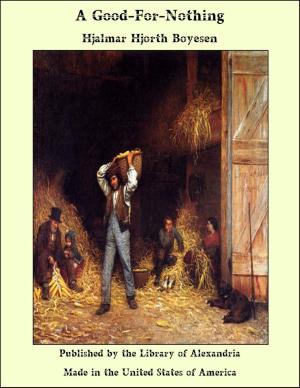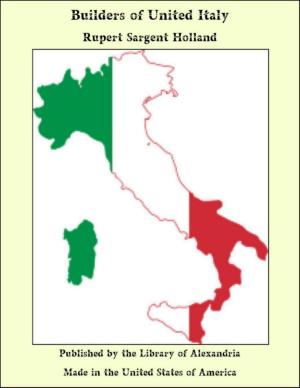In a Cheshire Garden: Natural History Notes
Nonfiction, Religion & Spirituality, New Age, History, Fiction & Literature| Author: | Geoffrey Egerton-Warburton | ISBN: | 9781465539625 |
| Publisher: | Library of Alexandria | Publication: | March 8, 2015 |
| Imprint: | Language: | English |
| Author: | Geoffrey Egerton-Warburton |
| ISBN: | 9781465539625 |
| Publisher: | Library of Alexandria |
| Publication: | March 8, 2015 |
| Imprint: | |
| Language: | English |
Introductory. Although much of the neighbourhood has become semi-urban and any idea of rural seclusion is destroyed, at least in summer, by the crowds that find their way to it from Manchester and Other large towns, yet the Cheshire village of Warburton in which this garden is situated is a real country place still. How long it will remain so is another thing. One salt works has been set up at Heatley about a mile away and we are now (1912) promised another, while there is every prospect of land being let for works in Warburton itself. Who knows, in a few years perhaps the whole place may be reduced to the desolation of another Widnes. Then, when it has become a rare thing to find even a blade of grass on the dreary black waste or to see any bird but a grimy sparrow, a record of what was once here may be strange reading. The garden itself about which I write is quite on the northern boundary of Cheshire, in old days divided from Lancashire by the Mersey only. The soil is light and sandy, not far from the rock in places and in places with water at a very little depth below the surface. It is well suited to hollies and rhododendrons, both of which grow abundantly and luxuriantly, as also do yews. There are a good number of ordinary deciduous trees, chiefly on the old bank of the river, such as oak, sycamore, chestnut, birch, beech, and alder, but no conifers of any age except one or two Scotch firs. There is one flourishing deadara which I planted myself and a few young Austrian pines that seem to be doing well. A spruce fir that I once planted behaved in an extraordinary way; instead of growing straight, it shot up in a zigzag fashion, the leading shoot one year going off at an angle of 60 degrees or so, and the next year harking back and starting in the opposite direction at about the same angle. Few of the trees can be more than 80 years old. I think most of them would have been planted by my father, who was rector from 1833 to 1849. There is however a remarkable old yew in the adjoining churchyard. The half of it, just below where the branches spring, measures nearly nine feet round. The Other half has entirely gone, so has practically the whole of the substance, the wood of the trunk, and what is left of the still standing side is little more than a shell with a coating of bark. Notwithstanding this there is quite a fair-sized head of leafy young branches (which by the way has greatly increased since I first remember the tree 40 years ago) growing up amidst the ruins of the old far-reaching boughs. These yet remain to tell something of the wide and grateful shade they once afforded to our "rude forefathers" as on summer Sundays they waited for service to begin, just as I remember the last generation gathered and gossipped under younger yews when this was the Parish Church. This yew is the "thousand-year-old tree" of the clerk's tale to visitors, and if one thinks how many years of slow growth it must have taken to form a trunk of that thickness, say 18 feet in circumference, and how many more for it to have decayed away to its present condition, it does indeed carry us back to an early date in English history when the little green shoot that sprang from the crimson-coated seed first saw the light
Introductory. Although much of the neighbourhood has become semi-urban and any idea of rural seclusion is destroyed, at least in summer, by the crowds that find their way to it from Manchester and Other large towns, yet the Cheshire village of Warburton in which this garden is situated is a real country place still. How long it will remain so is another thing. One salt works has been set up at Heatley about a mile away and we are now (1912) promised another, while there is every prospect of land being let for works in Warburton itself. Who knows, in a few years perhaps the whole place may be reduced to the desolation of another Widnes. Then, when it has become a rare thing to find even a blade of grass on the dreary black waste or to see any bird but a grimy sparrow, a record of what was once here may be strange reading. The garden itself about which I write is quite on the northern boundary of Cheshire, in old days divided from Lancashire by the Mersey only. The soil is light and sandy, not far from the rock in places and in places with water at a very little depth below the surface. It is well suited to hollies and rhododendrons, both of which grow abundantly and luxuriantly, as also do yews. There are a good number of ordinary deciduous trees, chiefly on the old bank of the river, such as oak, sycamore, chestnut, birch, beech, and alder, but no conifers of any age except one or two Scotch firs. There is one flourishing deadara which I planted myself and a few young Austrian pines that seem to be doing well. A spruce fir that I once planted behaved in an extraordinary way; instead of growing straight, it shot up in a zigzag fashion, the leading shoot one year going off at an angle of 60 degrees or so, and the next year harking back and starting in the opposite direction at about the same angle. Few of the trees can be more than 80 years old. I think most of them would have been planted by my father, who was rector from 1833 to 1849. There is however a remarkable old yew in the adjoining churchyard. The half of it, just below where the branches spring, measures nearly nine feet round. The Other half has entirely gone, so has practically the whole of the substance, the wood of the trunk, and what is left of the still standing side is little more than a shell with a coating of bark. Notwithstanding this there is quite a fair-sized head of leafy young branches (which by the way has greatly increased since I first remember the tree 40 years ago) growing up amidst the ruins of the old far-reaching boughs. These yet remain to tell something of the wide and grateful shade they once afforded to our "rude forefathers" as on summer Sundays they waited for service to begin, just as I remember the last generation gathered and gossipped under younger yews when this was the Parish Church. This yew is the "thousand-year-old tree" of the clerk's tale to visitors, and if one thinks how many years of slow growth it must have taken to form a trunk of that thickness, say 18 feet in circumference, and how many more for it to have decayed away to its present condition, it does indeed carry us back to an early date in English history when the little green shoot that sprang from the crimson-coated seed first saw the light















